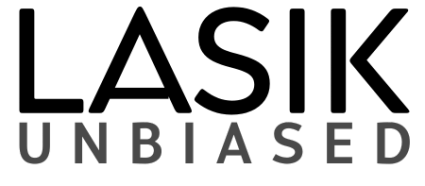SMILE Pro offers faster recovery and better precision, while TransPRK provides wider eligibility and lower cost, making each procedure ideal for different patient needs and eye conditions.
If you’re considering laser vision correction, you’ve likely heard about LASIK’s popularity, but two procedures are changing the game: SMILE Pro and TransPRK. Both offer flapless alternatives to traditional LASIK, avoiding many flap-related complications while delivering excellent vision correction results.
Understanding the difference between the two will help you make the best choice for your vision and lifestyle.
What is SMILE Pro Eye Surgery?
The SMILE Pro Procedure Explained
SMILE Pro (Small Incision Lenticule Extraction Pro) utilises the state-of-the-art VisuMax 800 laser system to deliver robotic, flap-free vision correction. The procedure creates a disc-shaped piece of corneal tissue called a lenticule, which is then removed through a 2-4 mm incision to reshape the cornea and correct refractive errors.
Key Features of SMILE Pro
- Ultra-fast laser time: Takes less than 10 seconds per eye, compared to 22 seconds with traditional SMILE
- Fully robotic system: Uses AI-driven technology for precise centration and alignment
- Minimally invasive: Small keyhole incision preserves corneal stability
- Advanced technology: Driven by the ZEISS VisuMax 800, featuring advanced imaging and tracking capabilities
SMILE Pro Recovery Process
Most patients experience a remarkably quick recovery with SMILE Pro. Vision typically improves within 24 hours.
What is TransPRK Eye Surgery?
The TransPRK Procedure Explained
TransPRK (Transepithelial Photorefractive Keratectomy) is a no-touch, single-step procedure in which an excimer laser simultaneously removes the epithelium and reshapes the cornea. Unlike LASIK, no flap is created, and unlike traditional PRK, no manual epithelium removal is required.
Key Features of TransPRK
- No-touch technique: Laser removes epithelium and reshapes the cornea without any instruments touching the eye
- Single-step process: Both epithelium removal and vision correction happen in one continuous laser application
- Surface treatment: Works on the cornea’s surface rather than creating internal changes
- High precision: Advanced excimer laser technology ensures accurate tissue removal
TransPRK Recovery Process
TransPRK recovery takes longer than SMILE Pro, with patients typically experiencing 1 week of downtime before returning to work. It takes about 3–5 days for the epithelium to regenerate, during which time patients might experience some discomfort and blurred vision. Full visual recovery takes 2-3 months for most patients.
SMILE Pro vs TransPRK: Detailed Comparison
Surgery Time and Procedure Differences
SMILE Pro is significantly faster, with the laser portion taking under 10 seconds per eye.
TransPRK takes approximately 30-60 seconds per eye for the laser treatment. The procedure is slightly longer than SMILE Pro but still relatively quick compared to traditional surgeries.
Recovery
SMILE Pro generally allows recovery within 24 hours, with most people resuming normal activities the next day. In comparison, TransPRK usually requires about a week for initial healing and return to daily routines.
Pain and Discomfort Levels
SMILE Pro is virtually pain-free during and after surgery. Patients may experience mild irritation, dryness, or light sensitivity for 24-48 hours, but significant pain is rare.
TransPRK involves more discomfort during the initial healing phase. Patients often experience mild itchiness, soreness, and sensitivity for the first 3-5 days while the epithelium heals.
Vision Correction Range and Eligibility
SMILE Pro treats:
- Myopia: -1 to -10 diopters
- Astigmatism: Up to -5 diopters
- Hyperopia: Up to +7 diopters (newer capability)
TransPRK treats:
- Myopia: Up to -6 diopters
- Hyperopia: Up to +3 diopters
- Astigmatism: Up to -5 diopters
Candidate Suitability
SMILE Pro is ideal for:
- Patients with stable prescriptions (minimum 1 year)
- Ages 18 and older
- Good overall eye health
- Those seeking faster recovery
- Patients with dry eyes (lower risk of worsening)
TransPRK is ideal for:
- Patients with thin or irregular corneas
- Individuals who are not candidates for LASIK because of insufficient corneal thickness
- Athletes or people in high-risk occupations
- Patients with dry eyes or corneal nerve sensitivity
- Wide range of candidates due to no-touch technique
Advantages and Disadvantages Comparison
SMILE Pro Advantages
- Extremely fast procedure (under 10 seconds laser time)
- Minimal discomfort during and after surgery
- Quick recovery (24 hours to clear vision)
- Lower dry eye risk compared to LASIK
- Precise, robotic surgery with AI assistance
- Wide treatment range, including hyperopia
SMILE Pro Disadvantages
- Higher cost (approximately INR 1,50,000 for both eyes)
- Limited surgeon availability (newer technology)
- Cannot treat presbyopia effectively
- Narrower eligibility compared to TransPRK
TransPRK Advantages
- No instruments touch the eye (completely touch-free)
- Suitable for thin corneas where LASIK isn’t possible
- Lower cost (approximately INR 75,000 for both eyes)
- Wide eligibility range for various eye conditions
- No flap complications whatsoever
- Good for active lifestyles and contact sports
TransPRK Disadvantages
- Slower recovery (1 week downtime, 2-3 months full healing)
- More initial discomfort during epithelium healing
- Higher risk of temporary glare and halos
- More follow-up visits and medications required
- Limited treatment range for high prescriptions
Safety Profile and Complications
SMILE Pro Safety
Clinical studies show excellent safety profiles for SMILE Pro, with no significant intra- or post-operative complications reported in large studies. The suction loss rate is remarkably low at 0.13%, compared to 0.8-4.4% with traditional SMILE.
Potential SMILE Pro complications (rare):
- Temporary dry eyes
- Mild halos or glare
- Under or overcorrection
TransPRK Safety
TransPRK has a strong safety record due to its no-touch approach, which minimises infection risk and mechanical complications. However, surface healing takes longer and may involve more temporary side effects.
Potential TransPRK complications:
- Corneal haze (temporary)
- Dry eyes during healing
- Glare and halos (first 1-2 weeks)
- Under or overcorrection
- Delayed visual recovery
Cost Comparison and Value Analysis
SMILE Pro typically costs around INR 1,50,000 for both eyes, reflecting its advanced technology and faster recovery benefits.
TransPRK is more affordable at approximately INR 75,000 for both eyes, making it accessible to a broader range of patients while still offering excellent results.
The cost difference often balances out when considering:
- SMILE Pro: Fewer follow-up visits, faster return to work, less time off
- TransPRK: Lower upfront cost but more follow-up care and longer recovery time
Quick Comparison Table: SMILE Pro vs TransPRK
| Feature | SMILE Pro | TransPRK |
| Laser Time | 8-10 seconds per eye | 30-60 seconds per eye |
| Recovery to Work | 24 hours | 1 week |
| Pain Level | Minimal | Mild to moderate initially |
| Cost (Both Eyes) | INR 1,50,000 | INR 75,000 |
| Myopia Range | -1 to -10D | Up to -6D |
| Hyperopia Range | Up to +7D | Up to +3D |
| Astigmatism Range | Up to -5D | Up to -5D |
| Flap Creation | None | None |
| Touch-Free | Small incision | Completely touch-free |
| Dry Eye Risk | Low | Low |
| Thin Cornea Suitable | Limited | Yes |
| Follow-up Intensity | Lower | Higher |
Making Your Decision: Which Surgery is Right for You?
Choose SMILE Pro if you:
- Want the fastest recovery possible and can afford the higher cost
- Have a busy lifestyle that requires a quick return to normal activities
- Prefer the most advanced, automated technology available
- Have moderate to high myopia with or without astigmatism
- Value precision and minimal discomfort above all else
Choose TransPRK if you:
- Have corneas that are too thin or irregular for LASIK to be a suitable option
- Are budget-conscious but still want excellent results
- Participate in contact sports or work in dusty/high-risk environments
- Don’t mind a longer recovery period for long-term benefits
- Want the safest possible approach with no instrument contact
Wrapping Up: Your Vision, Your Choice
Both SMILE Pro and TransPRK represent significant advances in laser vision correction, offering flapless alternatives to traditional LASIK with excellent safety profiles and outcomes. SMILE Pro excels in speed and comfort, making it perfect for those seeking the fastest path back to clear vision. TransPRK shines in versatility and safety, accommodating patients who might not qualify for other procedures.
The choice between SMILE Pro and TransPRK ultimately depends on your specific eye condition, lifestyle needs, budget, and recovery preferences. Consult with an experienced refractive surgeon who can evaluate your eyes and help you make the decision that aligns with your vision goals and life circumstances.
Are you prepared to take the next step toward clearer vision? Schedule a consultation with a qualified ophthalmologist to determine which procedure is best suited for your unique needs. Your journey to freedom from glasses and contacts starts with the right information and the right choice for your eyes.

